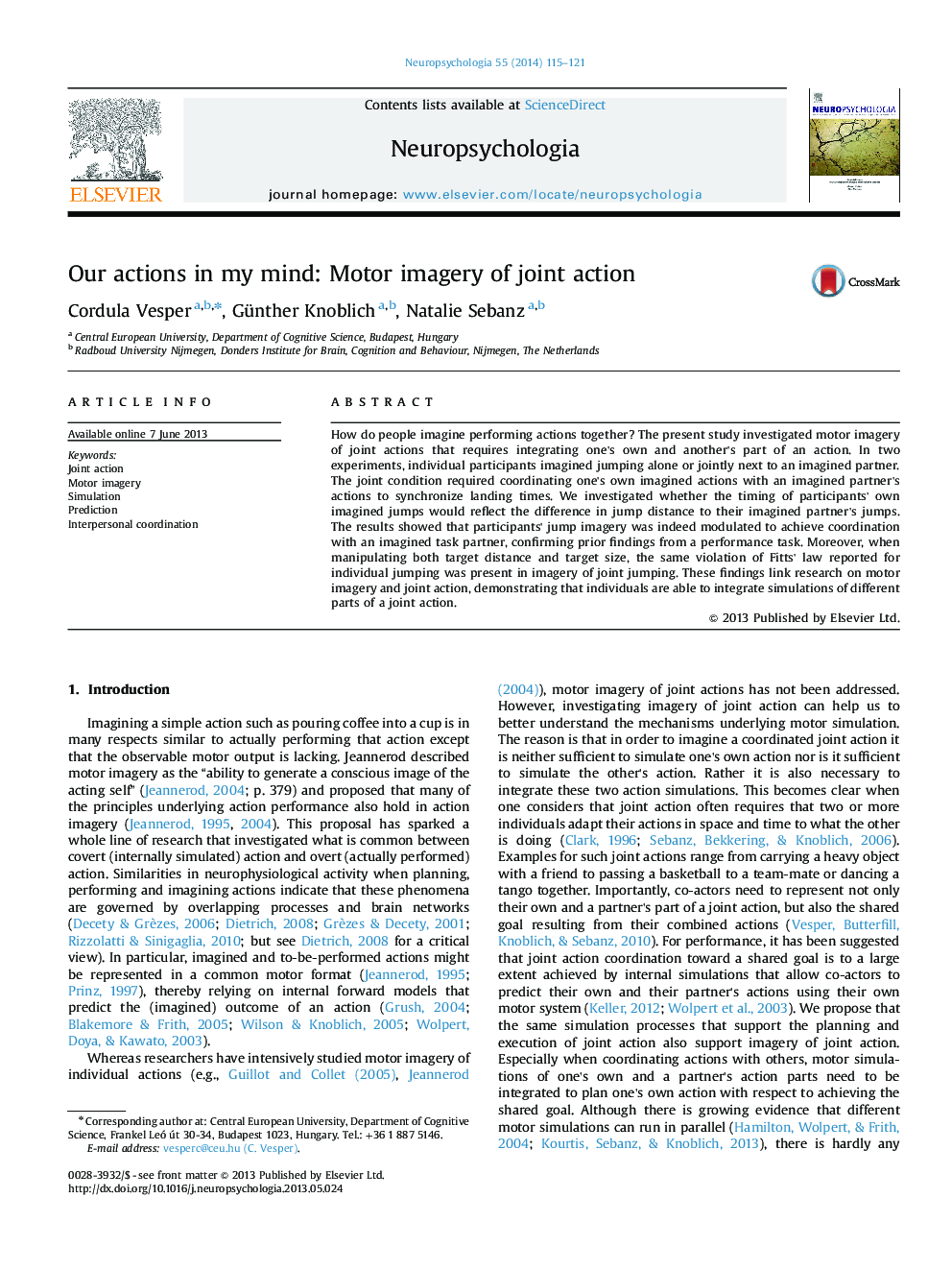| Article ID | Journal | Published Year | Pages | File Type |
|---|---|---|---|---|
| 7321841 | Neuropsychologia | 2014 | 7 Pages |
Abstract
How do people imagine performing actions together? The present study investigated motor imagery of joint actions that requires integrating one's own and another's part of an action. In two experiments, individual participants imagined jumping alone or jointly next to an imagined partner. The joint condition required coordinating one's own imagined actions with an imagined partner's actions to synchronize landing times. We investigated whether the timing of participants' own imagined jumps would reflect the difference in jump distance to their imagined partner's jumps. The results showed that participants' jump imagery was indeed modulated to achieve coordination with an imagined task partner, confirming prior findings from a performance task. Moreover, when manipulating both target distance and target size, the same violation of Fitts' law reported for individual jumping was present in imagery of joint jumping. These findings link research on motor imagery and joint action, demonstrating that individuals are able to integrate simulations of different parts of a joint action.
Related Topics
Life Sciences
Neuroscience
Behavioral Neuroscience
Authors
Cordula Vesper, Günther Knoblich, Natalie Sebanz,
